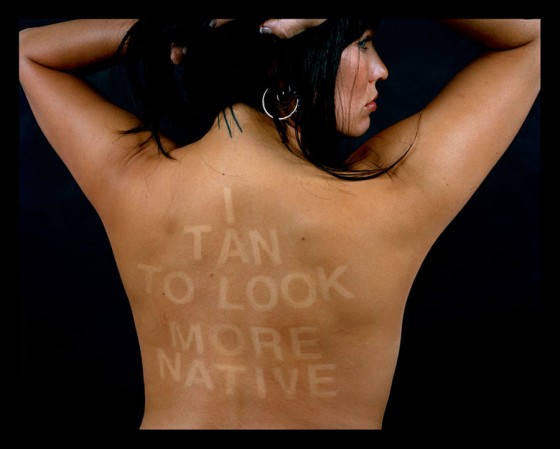
Lesson plan by Ellen C. Caldwell
for Art History Teaching Resources
Many art history survey courses touch upon paintings from the Hudson River School, photographs by Edward Curtis, paintings by George Catlin, or sculptures by Frederick Remington. But often, the survey textbooks do not take a complex look at the embedded political history, ideology, brutal violence, and genocide that such works allude to and suggest.
This lecture grew out of my desire and need to address these aspects of American art history in my “non-Western” and my “African, Oceanic, and Native American” surveys. From there, the lesson plan grew further when I taught my First Year Seminar entitled “Race-ing Art History.” This often-ignored history of white America’s need to “play Indian” and categorize Native Americans into long-lasting stereotypical roles is something that many Native artists address directly in contemporary works. So the purpose of this lesson plan is threefold: a reflective look back into American art history, a foundational approach to how Native Americans have been presented by others and have presented themselves, and a progressive current look at contemporary Native art practices.
Comparing current (self) portraits by Native artists such as James Luna, Erica Lord, and Tom Jones to portraits by artists like George Catlin, Jon Mix Stanley, and Edward Curtis helps to highlight and disrupt a longstanding history and tradition of America’s investment in “othering” Native Americans. This lesson also looks at the practice of “playing Indian,” via films and mascots, all under the guise of “respect.”
Read the rest at Art History Teaching Resources, exploring lesson plans, assignments, reading, and video suggestions for this lesson plan and many more.

